
18 minute read
INDUSTRY POLITICS
The Australian Government’s vision is for Australia to be recognised as a high-quality, skilled and sustainable manufacturing nation that supports a modern economy and ensures our essential needs continue to be met.
Our $1.5 billion Modern Manufacturing Strategy is at the core of this vision – it is driving investment and innovation, growing our exports and creating new jobs, including critical high-skilled jobs.
Advertisement
The COVID-19 pandemic has underlined how important it is to develop sovereign industrial capabilities and strengthen supply chains across key sectors, including vaccine production, agriculture and defence.
Businesses have shown remarkable adaptability and resilience in responding to the challenges of the pandemic.
But just when the worst of the crisis seemed to be passing, the Omicron variant has put severe strains upon workforces and supply chains.
Australian businesses can be assured of the Government’s ongoing support as we deal with this evolving crisis.
The Australian Government is working hard to keep energy costs down, cut red tape and generally create a positive business environment.
At the same time, we are increasing our investment in manufacturing.
As at 15 December 2021, the Modern Manufacturing Strategy has delivered more than $309 million for 176 Australian manufacturing projects across the National Manufacturing Priorities of Space; Medical Products; Resources Technology and Critical Minerals Processing; Food and Beverage; Defence and Recycling and Clean Energy.
Recycling technology Combined, these projects are valued at $906 million which will drive new manufacturing activity, investment and create jobs. In November last year the Government provided $77 million to support 7 MMI Food and Beverage and 6 MMI Recycling and Clean Energy projects.
Successful recipients include Pact Group in Victoria which was awarded $20 million to help develop its state-of-theart recycling technology to divert about 125,000 tonnes of plastic waste from landfill each year.
Sabrini Foods was awarded $1.4 million in funding to become the first local manufacturer to transform Australian dairy into extended shelf-life frozen paneer, overcoming one of the constraints to export.
A capable and advanced defence industry is vital to our national security and our response to natural disasters and other emergencies.
The development of domestic defence industries will not only strengthen our protection against external threats, it will also lead to innovations in other industrial areas.
In December last year the Government provided $26 million in MMI grants to 3 companies in the Defence sector to help them access new local and global defence supply chains.
Defence manufacturing centre This included a $16.2 million grant to Western Australian-based company Hofmann Engineering to support the establishment of an advanced sovereign defence manufacturing centre and training facility.
The lessons learnt from the pandemic have provided a powerful impetus to increase our self-sufficiency and strengthen our supply chains across key sectors
The $107.2 million Supply Chain Resilience Initiative will strengthen Australia’s ability to access critical products and inputs, better positioning us to respond to future supply chain disruptions
Under Round one of the Initiative, 26 projects in medicines and agricultural production chemicals will share in $33 million of funding. This includes $2 million for Strike Energy to establish a largescale facility using natural gas and green hydrogen to locally produce urea for agricultural fertiliser, replacing imports and securing local jobs.
Round 2 opened on 6 December and will support the critical areas of semiconductors and water treatment chemicals.
Further demonstrating its commitment to medical manufacturing, the Australian Government recently announced its significant long term partnership with global pharmaceutical company Moderna to establish a sovereign capability for mRNA. That partnership will see Moderna build a manufacturing facility in Victoria to produce respiratory mRNA vaccines for potential future pandemics and seasonal health issues. In the event of a future pandemic the facility could provide 100 million vaccine doses per year.
As part of this arrangement, Australians will have priority access to mRNA vaccines, including in the event of a pandemic, and it will also see Australia become a hub for mRNA research and development and clinical trials.
COVID-19 has highlighted the importance of strengthening our sovereign manufacturing capabilities and securing reliable supply chains. These are just a few of the programs and target investments being delivered by the Government to enable this. We will continue to support manufacturers through the pandemic and into the future. Our manufacturers are leading the way, transforming the economy and putting Australia at the forefront of modern manufacturing nations. IU
INDUSTRY POLITICS A manufacturing vision for the times
Hon Angus Taylor MP, Minister for Industry, Energy and Emissions Reduction
Skills shortage hits manufacturing deeply
In response to an alarming engineering skills shortage brought on by the COVID-19 pandemic, Sandvick Coromant is re-invigorating its inperson training programs at the company's specialist centres. Part of global industrial engineering group Sandvik, Sandvik Coromant is driven by manufacturing tools, machining solutions and knowledge for the metalworking industry. The company’s research confirms the manufacturing sector has been impacted by the highest skills shortage of any industry.
Pandemic restrictions led to engineers missing out on more than 18 months of training and education as manufacturing facilities were forced to close to the public and site visits ground to a halt. Search Consultancy research also found that 85 percent of businesses were feeling the strain due to a lack of skilled workers. Some 40 percent of research participants believed the scarcity of qualified candidates was the main contributing factor to the skills shortage.
Addressing the shortage To address the skills shortage, training on core metalworking skills is being offered at Sandvick Coromant Centres worldwide. Also available are lectures, presentations and production environment demonstrations that showcase the firm’s products and machining techniques. The first in the cutting tool industry to open application centres, they now operate across Europe, the Americas and Asia.
While the firm switched to online training in recent times in response to COVID restrictions, it acknowledged that only so much can be achieved in the virtual world. To be proactive and take the skills gap more seriously, bringing people together to upskill was essential.
However, the online training was extensive and included a webinar series, product training sessions and live product demonstrations streamed over video conference. The firm also offered monthly solid round tool knowledge sessions from January 2021 covering critical areas such as metal cutting from drilling and milling as well as more specific topics like machining aluminium for automotive components and machining composite materials. The offering was designed to deliver core application knowledge to those who lacked training capabilities in-house.
In the future, the company expects to offer a blend of virtual and in-person training to emerging and established engineers to create a skilled workforce while taking steps to address future needs and the next generation of engineers. Future engineers A 2020 report by EngineeringUK found that almost 50 percent of 11-19 year olds knew little or almost nothing about the role of engineers. Also concerning was that the pandemic had impacted when people were starting their careers. BAE Systems found that more than 40 percent of those aged 1624 surveyed in the UK are putting their career plans on hold until the pandemic is over.
Meanwhile, Sandvick Coromant is involved with schools and universities to educate students on core metal cutting technologies. For example, it worked with Rensselaer Polytechnic Institute to produce parts for race cars for a student competition.
As part of the collaboration, the company advised on the appropriate tool choices for the aerospace-grade aluminium components of the race car as well as on appropriate machining techniques and general advice for material removal.
The company also provides several education programmes enabling students to work at Sandvick Coromant for either two weeks, or six months, after they finish school. IU
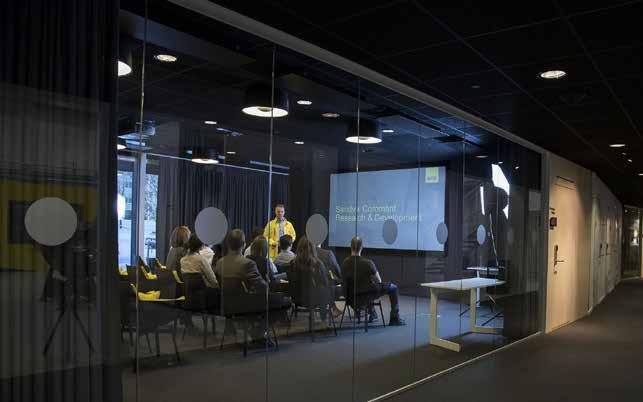
The manufacturing sector has been impacted by the highest skills shortage of any industry.
US claims world’s biggest-ever manufacturing site
In a move to shore up America's manufacturing sector, Intel Corporation will invest US$20 billion into the “largest silicon manufacturing location on the planet” on 1,000 acres in New Albany, Ohio.
The initiative comprises the US$20 billion initial investment in two fabs (short for fabrication plants; they typically produce silicon wafers), with construction beginning in late 2022 and the facility expected to open in late 2025.
An Intel spokesperson has told
US media that the company has a goal of investing as much as US$100B over the next decade. However, he acknowledged that, without federal government support the goal would be difficult to reach in that time frame.
The initial US$20 billion investment doesn’t depend on federal subsidies.
US$100 million into education Intel will also spend US$100 million on education over a decade “to help develop and attract a pipeline of skilled talent from within the region”. It is promising approximately 3,000 Intel jobs, 7,000 construction jobs, and that 140 existing Ohio companies will do business with Intel as suppliers. Intel suggests the average annual salary at its facilities will be US$135,000.
While Intel hasn’t offered specific production details, CEO Pat Gelsinger said in a presentation that it would produce advanced chips at process nodes “2nm and below.”
“What we have said is that the Ohio factories are designed for the ‘Angstrom era,’ with support for Intel’s most advanced process technologies, including Intel 18A.”
It appears that New Albany, Ohio, is far more developed and is one of the wealthiest places in Ohio, with Google, Amazon, and Meta all operating data centres there.
Samsung on Intel’s heels In August 2020, Samsung announced that it had begun producing memory chips on the largest production line in the world — Pyeongtaek Line 2, around the size of 16 soccer fields.
But Intel manufacturing and supply chain manager Keyvan Esfarjani said its Ohio facility might be 30 football fields in size, with clean rooms as large as four football fields each.
However, Samsung’s Pyeongtaek Line 2 is just one of the facilities in the area and a new, third Samsung fab will have clean rooms that fit 25 soccer fields, compared to Intel’s four.
Biden backing manufacturing rejuvenation In April 2021, US President Biden called for federal funding to ease the semiconductor shortage and in June the Senate passed a bill that would provide US$52 million for domestic semiconductor manufacturing.
But it hasn’t yet passed the House of Representatives. Even though the so-called “CHIPS Act” has bipartisan support, the money isn’t available. Biden has cited Intel and Ohio as an example of what’s possible if the US invests in domestic chipmaking, while raising the spectre of national security and global competitiveness concerns if the bill fails to pass.
“We were ranked number one in the world in R&D. But guess what? We now rank number nine,” Biden said, pointing out how much US chip manufacturing has receded.
“Today, 75 percent of production takes place in East Asia. 90 percent of the most advanced chips are made in Taiwan.”
“This project will be bigger and faster with the CHIPS Act,” Intel CEO Gelsinger added.
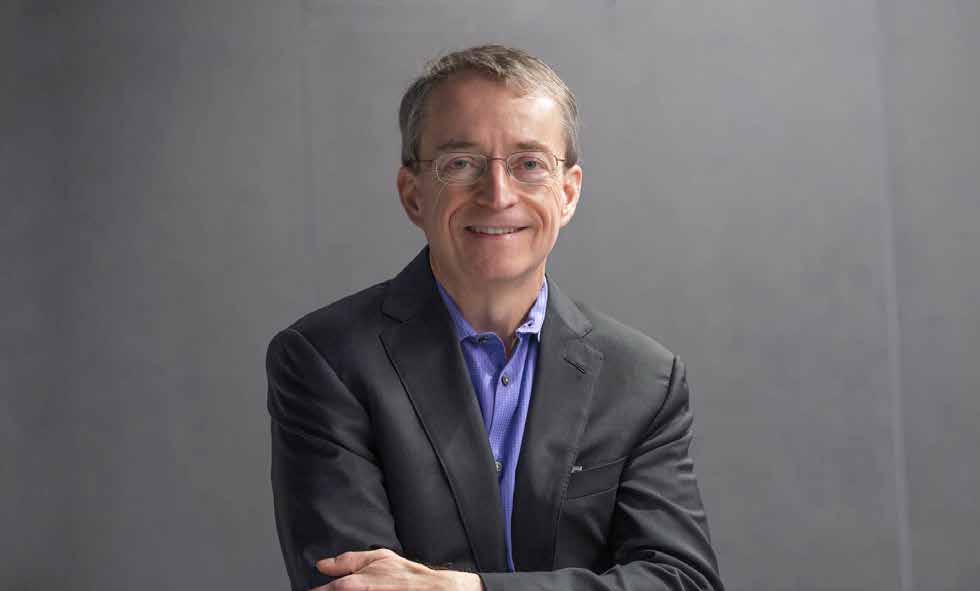
Intel CEO Pat Gelsinger said the factory would produce advanced chips at process nodes “2nm and below.”
FREE SHIPPING AUSTRALIA WIDE


Australia’s #1 Online Supplier of Spring Balancers
Got Spring Balancers has one of the largest ranges of Zero Gravity Balancers, Spring Balancers, Hose Reel Balancers and Retractor Balancers in Australia.
Ready to ship nationwide. • Ergonomic Design • Reduce Fatigue • Prolong Tool life • Increase Work Safety
Order online : gotspringbalancers.com.au
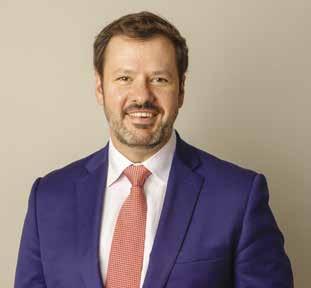
October 2017 will go down as a dark day in Australia’s manufacturing history. With Holden shutting its local manufacturing operations, it marked the first time since 1948 that Australia had no cars fully manufactured on home soil.
For decades, Australia was known as the home of the V8s and reliable six-cylinder cars. But that all changed when the Coalition Government goaded car manufacturers offshore.
We know where car manufacturing is heading; that’s in the direction of electric vehicles. After years of lagging sales, the number of new electric vehicles (EV) in Australia nearly tripled last year.
The only problem? They’re all manufactured offshore.
But it doesn’t have to be this way. Australia could and should be a country that makes things. Talent and resources
We’ve already got the local talent and vision, and the natural resources to match. What we’ve been lacking is a government with the political will to make it happen.
At the moment, the only all-electric vehicles made available in Australia are from international manufacturers. If we want to strive to become an EV manufacturing superpower, we need to first start manufacturing the batteries that power those vehicles.
With lithium, copper and nickel in abundance, we have every natural resource that goes into building the batteries that could power electric vehicles.
We’re already seeing local industry charging ahead. Brisbanebased Tritium, which makes EV fast chargers, recently got backing from the US Government to set up a new production plant in Tennessee.
The company expects to be making 30,000 chargers a year and create an estimated 500 jobs.
These are opportunities that Australia is missing out on. We’re losing jobs and economic gains to other countries because the Government can’t get its act together on EV manufacturing.
National EV Strategy
Research by the Australia Institute’s Carmichael Centre called for as much in its latest report on rebuilding vehicle manufacturing in Australia. Lead researcher Dr Mark Dean urged the government to take a proactive role on EV manufacturing, saying there’s no excuse for inaction.
A future Labor Government will set up the very first National EV strategy that will examine the potential for local manufacture. We’ll work closely with industry, unions, states and consumers to this end.
We’re under no illusion that it’ll be a long road to recovery, but we have an aggressively ambitious vision to get there.
That’s why Labor established the $15 billion National Reconstruction Fund, to create secure jobs for Australian workers, drive regional economic development and boost Australia’s sovereign manufacturing capability. $3 billion of this fund will be available to support the uptake of clean energy components like batteries.
We know the current price points for many consumers are out of reach, which is why we’ll introduce an EV discount. This means electric cars that are below the luxury car tax threshold will be exempt from import tariffs and fringe benefits tax.
Australia can’t afford to keep shipping our best assets offshore. We’ve got all the elements that go into building up local car manufacturing. Now, we just need a government with the vision.
Backing Australia’s electric vehicle future
Hon Ed Husic MP, Shadow Minister for Industry and Innovation
DFAT tells manufacturers “make contingency plans”
By Claire Moffat
The Department of Foreign Affairs and Trade (DFAT) has told Industry Update that “Australian companies with business operations or supply chains in Ukraine, or Europe more broadly, should also monitor advice issued by local authorities and prevailing economic conditions, and make contingency plans accordingly.”
The advice comes as NATO, the United States and Ukraine all say they have seen no evidence of a Russian troop withdrawal from Ukraine's border with Russia, rather the opposite.
“The Australian Government is deeply concerned by the Russian military build-up on Ukraine's border. As of 15 February 2022, we recommend leaving Ukraine immediately by commercial means if it is safe to do so. Australians in Ukraine should monitor travel advice on Smartraveller.
According to a DFAT spokesperson, “Companies must also be aware of their responsibilities in complying with Australian sanctions laws. Australian Autonomous Sanctions currently impose restrictions on trade with, and engagement in, commercial transactions with certain parties in Ukraine and Russia. These are subject to change. More information about these sanctions can be found on the DFAT website.”
Industry Update spoke with Bonfiglioli Australia managing director Martin Broglia who said the company is not anticipating a local disruption in their supply chain as a result of the current situation in Russia.
He told Industry Update that a few years ago there was a similar situation and they did not feel significant disruption at the time.
“Bonfiglioli has manufacturing facilities in a number of countries and has the capacity to complete orders, which may be delayed because of the situation," he said.
Managing director of Tente Australia Grant Smith, which has a head office in Germany, said “It was not something that had been discussed between ourselves and Germany or France, our two main supply chain countries, but it is something that we should be thinking about and taking into consideration.”
Observers are aware that the impact could be wide ranging, from technology suppliers and lenders to goods exporters and manufacturers dependent on raw materials.
Disrupted trading links would increase inflationary pressures and curb activity for a wide range of European businesses.
ING head of commodities strategy Warren Patterson has told the media that sanctions imposed on Russian banks or industries are likely to have “a far-reaching impact on the commodities complex” that could spread across markets in which the country is a leading exporter, including aluminium, nickel, copper and platinum. IU
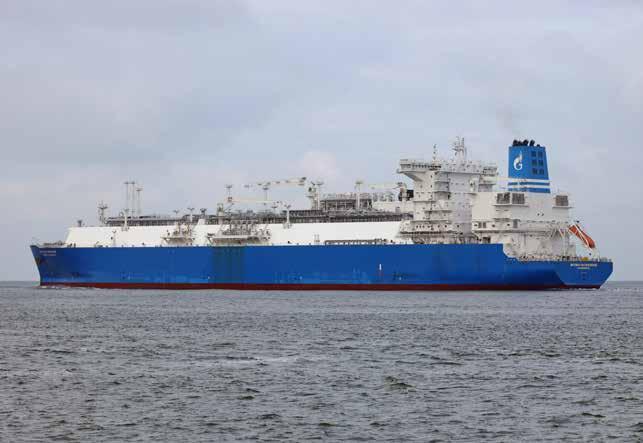
The impact of full scale aggression by Russia could be wide ranging, from technology suppliers and lenders to goods exporters and manufacturers dependent on raw materials
Bonfiglioli celebrates one million product milestone
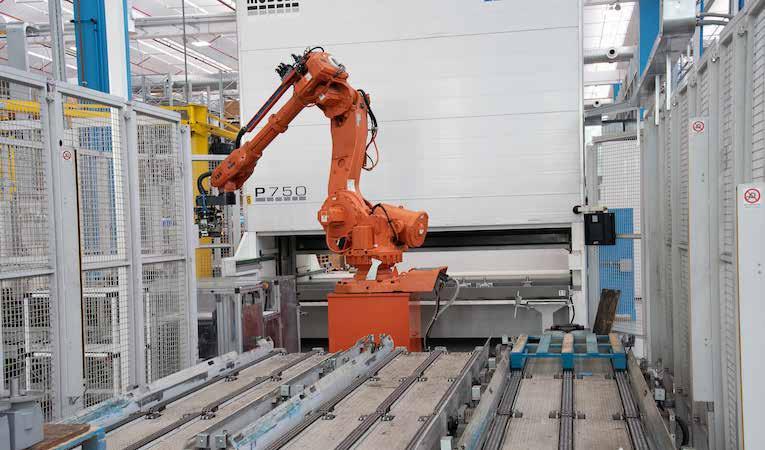
Evo is a philosophy and a mindset, based on evolution, according to Bonfiglioni managing director, Martin Broglia.
Bonfiglioli passed a major milestone in December last year when its Italy-based EVO (EVOlution) plant produced its millionth product in just two years.
“The majority of manufacturing has taken place over the COVID-19 pandemic which has been an uncertain and disruptive time for the global economy and global supply chains,” Bonfiglioli Australia New Zealand managing director Martin Broglia said. “This is something to celebrate, having enough international de and and team members to make this milestone happen.”
The international gear motor manufacturer, which was established in 1956, opened the EVO plant in 2019. Spanning 58,500m2 , the plant is part of the firm’s largest industrial site in its hometown of Bologna. Industry 4.0 enabled, it is focused on innovation with EVO developed as a long-term, competitive growth strategy in the field of industrial processing and handling products.
“EVO is more than just an innovative plant; EVO is a philosophy and a mindset, based on evolution, continuous growth and improvement,” Broglia said.
Energy efficiency The plant was designed to follow the most recent energy efficient standards, generating more energy than is required by all buildings using renewable sources, such as a 3 MW peak power photovoltaic plant mounted on the building’s roof and in the awnings of the staff carpark.
“The pressure is on corporations, particularly multinationals, to reduce their carbon emissions and contribute to the United Nations’ Sustainable Development Goals,” Broglia said.
He noted the company’s footprint was significant as it employed more than 3800 staff globally and produced more than one million products each year. It operates 21 branches worldwide as well as 14 production facilities and a network of 550 distributors.
“This plant underlines our commitment to the environment and the future of automation,” he said.
Broglia noted the strong uptake for automation, forecasting 2022 would be another important year for IIoT enabled components.
“Companies around the country are reshoring their manufacturing,” he said. “Having reliable components, able to operate in real-time, is of particular importance.”
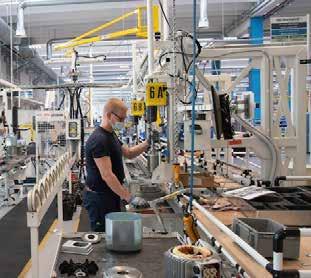
Bonfiglioli Transmission (Aust) Pty Ltd (02) 8811 8000 www.bonfiglioli.com
AI reports calls for EV manufacturing industry commission
Research by the Australia Institute’s (AI) Carmichael Centre states that a unique combination of advantages has handed Australia a historic chance to become a sustainable global manufacturer of electric vehicles.
However, the federal government needs to act swiftly and decisively.
The new report, Rebuilding Vehicle
Manufacturing in Australia: Industrial
Opportunities in an Electrified Future, has found Australia is uniquely blessed with advantages to attract and retain
EV manufacturing and rebuild the nation’s car-making capacity. This potential, however, will not be met without major government action.
“When it comes to creating an EV manufacturing sector, Australia enjoys advantages other nations would die for: rich reserves of lithium and rare earths, strong industrial infrastructure, a highly skilled workforce, powerful training capacity, abundant renewable energy options, and untapped consumer potential,” the report’s lead author, Dr Mark Dean said.
“And contrary to popular belief, we wouldn’t be starting from scratch. Thanks to the resilience of our remaining automotive manufacturing supply chain, a surprising amount of auto manufacturing work such as components, specialty vehicles, and engineering, still exists here.”
But Dr Dean said his research found Australia’s advantages would count for little without significant government support. The report makes a number of recommendations including:
• Establishing an EV Manufacturing
Industry Commission • Using tax incentives to encourage firms involved in the extraction of key minerals – primarily lithium and rare earths – with local manufacturing capabilities, especially emerging Australian EV battery industries • Introducing a long-term strategy for vocational training, ensuring the
establishment of skills to service major EV manufacturers looking to set up operations Australia • Offering major global manufacturers incentives (tax incentives, access to infrastructure, potential public capital participation, etc) to global manufacturers to set up – especially in Australian regions undergoing transition from carbonintensive industries • Introducing local procurement laws for the rapid electrification of government vehicle fleets
“No nation builds a major industry without its government taking a proactive role. Our new research shows there’s no excuse for inaction, because there are a huge range of powerful levers our government could be pulling,” Dr Dean said.
“If we capture the moment we’ll capture abundant benefits: creating tens of thousands of regional manufacturing jobs, reducing our dependence on raw resource extraction, reinforcing our accelerating transition toward nonpolluting energy sources, and surring innovation, research, and engineering activity in Australia. We just need our government to act.” IU

Dr Mark Dean said that the federal government needs to take a proactive role.









